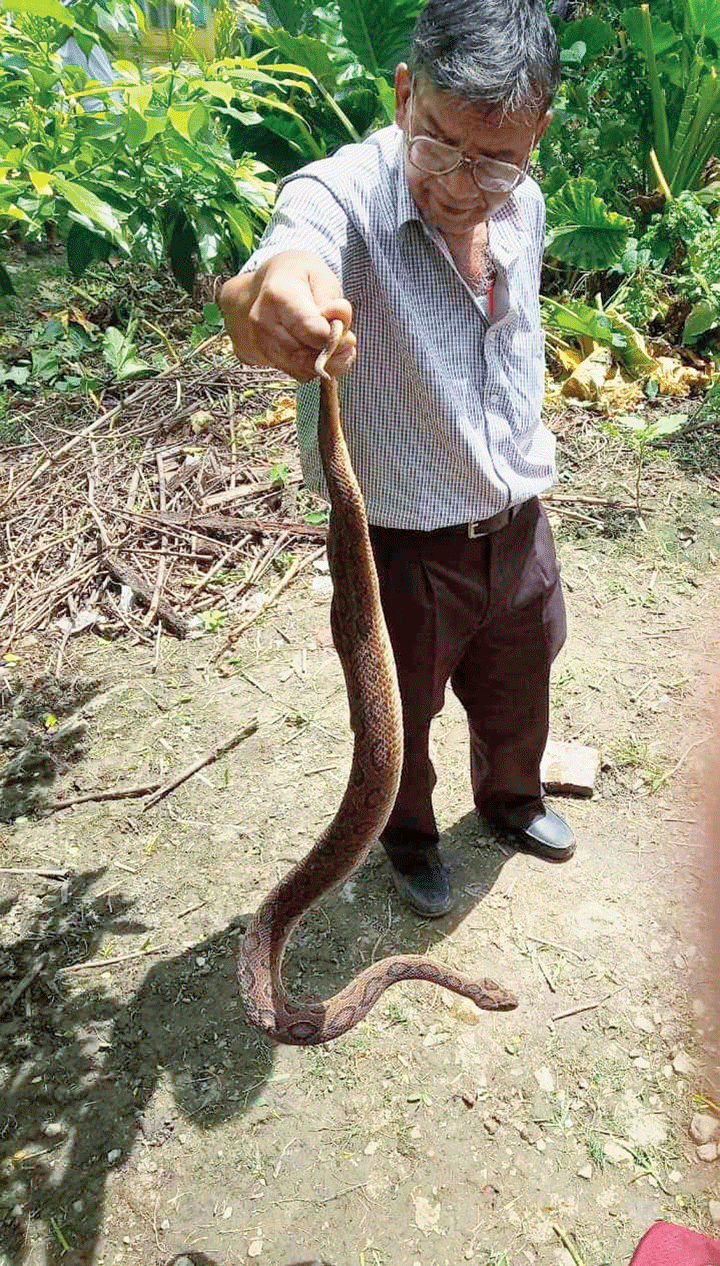A retired man with a passion to rescue wild animals straying into domestic settlements died after a snakebite last week, even after receiving anti-venom doses thrice at government hospitals.
The death of Anup Ghosh, 63, underscores the perils of amateur rescue operations and questions the efficacy of existing protocols of administering anti-venom medications.
Ghosh, a Barrackpore resident and member of the Paschim Banga Vigyan Mancha’s North 24-Parganas unit, went to a house in Naihati last Thursday after reports of the presence of a Russell’s viper.
Russell’s vipers are among the four most poisonous groups of snakes, the other three being Indian Cobra, Saw-scaled viper and Indian Common Krait.
The Russel’s viper, around five feet long, was coiled in the tiles of the kitchen’s roof. Ghosh had caught the snake and was trying to put it inside a bag when he was bitten, his associates said.
Ghosh was first taken to Naihati State General Hospital, where he was administered the first dose of anti-venom. He received the next two doses at a government hospital in Kalyani, where he was shifted because the Naihati hospital did not have an ICU and dialysis facilities.
Ghosh’s condition started worsening on Friday night and he died while being taken to a hospital in Calcutta on Saturday.
His death has triggered a flurry of obituaries on Facebook. People remembered him for rescuing countless snakes and raising awareness about the reptiles and the need to go to a doctor after a snakebite instead of a quack.
Ghosh’s death questions the usefulness of the current anti-venom treatment protocol. Around 46,000 people die of snakebites in India every year, according to the American Society of Tropical Medicine and Hygiene.
“Ideally, there should be different anti-venoms for different snakebites. But to have four separate anti-venoms at lakhs of primary health centres and government hospitals is almost impossible. The health-care system does not have enough trained personnel to handle separate anti-venoms,” said a forest official.
The existing polyvalent anti-venom doses are a mixture of venoms collected from all four types of big snakes. “It is considered effective because in most snakebite cases, the person bitten cannot tell the snake,” said a doctor.
However, there is a growing demand for the need to study venoms of snakes from different regions to help make region-specific anti-venoms, because the venom composition of snakes varies with region. A recent study by scientists at Tezpur University in Assam showed that commonly used anti-venoms are not effective for South Indian kraits.
“Ghosh has been rescuing snakes and other animals for more than 25 years now. He did not have any formal training. He spent a lot of time with snake charmers and learnt the tricks from them,” said Anindita Bhaumik, Ghosh’s associate and another member of the science forum.
The state forest department does not have a dedicated cadre for rescuing snakes straying into human settlements. “We have some trained men but they are few and far between. During emergency situations, we have to depend on people like Ghosh,” said a senior wildlife official at the headquarters in Calcutta.
The divisional forest officer of North 24-Parganas, Angshuman Mukhopadhyay, acknowledged that Ghosh was their go-to person during an emergency.
Suvrajyoti Chatterjee, the secretary of the Human and Environment Alliance League, an NGO that works for animals, has been handling snakes for more than a decade now. “There is no written protocol on how to rescue a venomous snake, especially during an emergency. Someone prefers a tong, someone a hook and a third might prefer a stick. I try to have minimum contact with the snake and never headpin it,” said Chatterjee.
Another member of a wildlife NGO called the tendency to demonstrate a snake’s fangs after capturing it, something that Ghosh was seen doing in pictures in the social media, dangerous and unwarranted. “Rescuing snakes should be treated like a professional job, not as show business,” he said.

